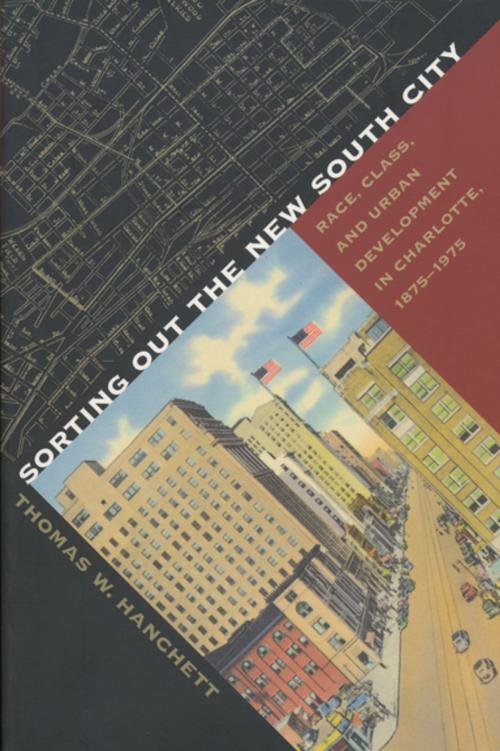Sorting Out the New South City
Race, Class, and Urban Development in Charlotte, 1875-1975
Nonfiction, History, Americas, United States| Author: | Thomas W. Hanchett | ISBN: | 9780807861882 |
| Publisher: | The University of North Carolina Press | Publication: | October 6, 2017 |
| Imprint: | The University of North Carolina Press | Language: | English |
| Author: | Thomas W. Hanchett |
| ISBN: | 9780807861882 |
| Publisher: | The University of North Carolina Press |
| Publication: | October 6, 2017 |
| Imprint: | The University of North Carolina Press |
| Language: | English |
One of the largest and fastest-growing cities in the South, Charlotte, North Carolina, came of age in the New South decades of the late nineteenth and early twentieth centuries, transforming itself from a rural courthouse village to the trading and financial hub of America's premier textile manufacturing region. In this book, Thomas Hanchett traces the city's spatial evolution over the course of a century, exploring the interplay of national trends and local forces that shaped Charlotte, and, by extension, other New South urban centers.
Hanchett argues that racial and economic segregation are not age-old givens, but products of a decades-long process. Well after the Civil War, Charlotte's whites and blacks, workers and business owners, all lived intermingled in a "salt-and-pepper" pattern. The rise of large manufacturing enterprises in the 1880s and 1890s brought social and political upheaval, however, and the city began to sort out into a "checkerboard" of distinct neighborhoods segregated by both race and class. When urban renewal and other federal funds became available in the mid- twentieth century, local leaders used the money to complete the sorting out process, creating a "sector" pattern in which wealthy whites increasingly lived on one side of town and blacks on the other.
One of the largest and fastest-growing cities in the South, Charlotte, North Carolina, came of age in the New South decades of the late nineteenth and early twentieth centuries, transforming itself from a rural courthouse village to the trading and financial hub of America's premier textile manufacturing region. In this book, Thomas Hanchett traces the city's spatial evolution over the course of a century, exploring the interplay of national trends and local forces that shaped Charlotte, and, by extension, other New South urban centers.
Hanchett argues that racial and economic segregation are not age-old givens, but products of a decades-long process. Well after the Civil War, Charlotte's whites and blacks, workers and business owners, all lived intermingled in a "salt-and-pepper" pattern. The rise of large manufacturing enterprises in the 1880s and 1890s brought social and political upheaval, however, and the city began to sort out into a "checkerboard" of distinct neighborhoods segregated by both race and class. When urban renewal and other federal funds became available in the mid- twentieth century, local leaders used the money to complete the sorting out process, creating a "sector" pattern in which wealthy whites increasingly lived on one side of town and blacks on the other.















